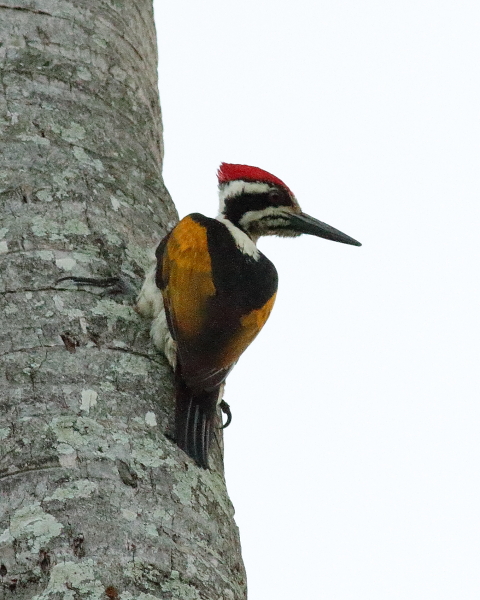Today was to be Blue Whale day. We stayed near Mirissa the previous night and first thing in the morning we heading offshore from the rather busy and maniac harbour. Blue Whales have been found to be a regular sight just off southern Sri Lanka in recent years. The sea bed drops quickly to 1000 metres only 10 km offshore which prove to be productive feeding grounds due to up-welling of cold water from the depths into the warmer waters of the surface. Our first sighting of the morning was a mating pair of sea turtles. They were called out as Green Sea Turtles by the on-board guides but on reviewing the pictures for this post I think they're actually Olive Ridley's Sea Turtles. We also had one large pod of Spinner Dolphins on the way out. The seabird diversity was extremely poor as was to be expected with the only seabirds seen being several tern species which included several Bridled Terns which were a lifer for myself. We eventually seemed to hit a hotspot for whales and managed to see about three Blue Whales. These animals are supposed to belong to the subspecies of Blue Whales called the Pygmy Blue Whale which as the name would suggest are slightly smaller than Blue Whales found in the Atlantic but they were still gigantic animals. It really was an honour to see the largest ever animal that has existed on planet Earth. Several Remora fish were also seen attached to the whales. These fish have specially adapted suckers on the top of their heads which attach to the whales skin. A few ugly scars were seen on one animal and many have been the result of a run-in with a boat propeller. This area has a heavy flow of large container ships which use the deep water to transport goods along the coastline. Whale fatalities are a regular occurrence unfortunately. Another feature of concern was the large number of whale watching tour boats in the area and their behaviour. At one stage I counted 21 whale-watching boats in the immediate vicinity of the whales. Once a whale came to the surface to breath there was a huge stampede of boats rushing towards the whales. I don't think this is potentially the best for the whales welfare. The whole whale watching industry is only a very recent addition here and I'd hate to see what sort of numbers of boats will be involved in these trips in a short number of years.
In the afternoon we visited a few more nearby lakes/marshes and gardens where the birding proved very productive.
In the afternoon we visited a few more nearby lakes/marshes and gardens where the birding proved very productive.
 |
| Blue Whale |
 |
| Blue Whale tail with Remora fish. |
 |
| Close up of Remora fish. |
 |
| Blue Whale blow on the right with whale watching boat very close-by on the left. |
 |
| Blue Whale blow. |
 |
| Blue Whale blowhole. |
 |
| Remora fish. |
 |
| Blue Whale |
 |
| Blue Whale |
 |
| Blue Whale with three Remora fish. |
 |
| Spinner Dolphins |
 |
| Spinner Dolphins |
 |
| Spinner Dolphins |
 |
| Olive Ridley's Sea Turtle |
 |
| Olive Ridley's Sea Turtle |
 |
| Olive Ridley's Turtle |
 |
| Summer plumaged Bridled Tern |
 |
| Summer plumaged Bridled Tern |
 |
| Winter plumaged Bridled Tern |
 |
| Black Bittern |
 |
| White-winged Black Tern |
 |
| White-winged Black Tern |
 |
| Whiskered Tern |
 |
| Grey-headed Swamphen |
 |
| Watercock |
 |
| Blue-tailed Bee-eater |
 |
| Spot-billed Pelican |
 |
| Spot-billed Pelican |
 |
| Spot-billed Pelicans |
 |
| White-breasted Waterhen |
 |
| Lesser Whistling Ducks and Red-wattled Lapwings. |
 |
| Red-backed Woodpecker |
 |
| Female White-naped Woodpecker |
 |
| Male and female White-naped Woodpeckers |
 |
| Male White-naped Woodpeker |
 |
| White-naped Woodpecker |
 |
| Male and female White-naped Woodpecker |
nice post
ReplyDelete